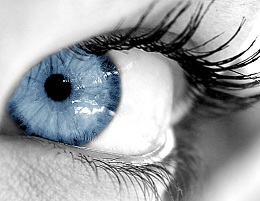“Everything one encounters is preconsciously screened and classified as either good or bad, within a fraction of a second after encountering it.” ~John Bargh
Have you ever had that “gut” reaction to someone when meeting them for the first time? You know… that instant “I like you or I hate you” one. Some people call it “intuition.” It is “that” which directs you to either gravitate toward someone or move away the second you lay your eyes on them. For example, perhaps you met someone who is absolutely gorgeous, but it just seems that your interest in them begins and ends with their looks? How about the person who is average or below-average when it comes to physical appearance, yet they have that “thing” about them… You can’t put your finger on it, but you just can’t resist wanting to get to know them better. What is it about some people – that they have this uncanny ability to attract people to them with a magnetic personality?
There is a factor that a majority of the population is unaware of. This “X factor” will determine, to the tune of over ninety percent in frequency, whether or not we will forge a harmonious relationship.
Chances are, if you got a “good” feeling while talking to someone, you had a deep interest in connecting with them. If you got a “not so good” feeling, you likely completed the conversation in a polite manner and went your separate ways, with no intention to connect or continue the relationship into the future. One way I can definitely relate to this “not so good” feeling is when I go to a car dealership. The last thing I want is to forge a lasting relationship with the salesperson!
Snap Impressions
A Stanford study on non-verbal communication, demonstrated that it takes only 10 to 15 seconds of videotape for someone to form a lasting impression about another person–in this case students ranking the performance of various teachers. What was even more remarkable was that their snap impressions consistently matched up with those of other students who evaluated the same professors after spending an entire semester in their classrooms.
What is a snap impression? It’s just that – a snap decision that is made about someone or something – a snapshot. It’s very quick and decisive, and it’s almost as if after that decision is made that the person’s mind is made up.
Information Overload
Why do you think that our minds make these “snap” impressions or “snap decisions?” The reason is because our brains are responsible for processing a tremendous amount of information. We are also exposed to an enormous amount of information in every second we are awake and functioning. Our brain has to process not only the information that we are consciously perceiving, but it also has to process the information that we don’t, like our blood pressure, fluid levels, blood chemistry, and so forth. The way that our brains attempt to deal with and process this information is by doing two things.
Number one: It takes in the information and pieces together perceptions of what it feels is happening. It’s like the blind spot in our visual fields – we know it’s there, but we don’t actually “see” a black dot in the outside of our visual fields – our brain “patches together” the information coming in from the eyes and actually fills in the blind area with a perceived visual picture. The end result is that we have the impression of having no blind spot, but the reality is that there is a blind spot. So that’s number one – the brain sort of makes up things as perceptions about the information it’s gathering.
Number two: The brain makes very quick decisions and then moves on. This is what we experience when we make these snap decisions. It’s the brain’s coping mechanism that allows us to make a decision about one of the many things our brain has to make a decision on, before it moves on to making another decision.
The Unconscious Judgment Process
A psychological study conducted by Dr. John Bargh and Dr. Shelly Chaiken measured the existence of an unconscious judgment process. In the study, they had a list of words that could either be considered good (like “friend” or “beautiful”) or bad (like “death” or “cancer”). The researchers also used a device called a tachistoscope, which is capable of flashing a picture onto a screen for a time as short as only about a quarter of a second. At this speed, the conscious mind doesn’t have time to register or process the image.
Prior to the experiment, the participants took a look at the word list and categorized each of the terms as either a good or bad term. During the experiment, the scientists presented the subjects with two words – one right after the other. The first word was flashed onto the screen, too quickly to be registered by the conscious mind, and then the second word was displayed on the screen, long enough for the participant to read the word. The subjects were asked to push a button if they thought the word was good, and another button if they thought the word was bad.
They then added a wrinkle to their study – they would either present two words that were “congruent” with each other, or they would present two words that were not “congruent” with each other. When the words were “congruent” (such as flashing the word “happy” which was not registered consciously followed by the word “beautiful” which was projected long enough to be registered consciously), the participants quickly pushed a button that indicated the word was “good.” However, when the words were not “congruent” (such as flashing the word “cancer” which was not registered consciously followed by the word “beautiful” which was projected long enough to be registered consciously), the participant also pushed the button that indicated the word was good, but there was a notable delay in the time it took to respond!
Bargh concluded, “Therefore, everything one encounters is preconsciously screened and classified as either good or bad, within a fraction of a second after encountering it.”
What Does This Mean to Us?
The unconscious mind judges absolutely everything it perceives, so we interpret everything we experience as either good or bad before our conscious mind even knows what we are experiencing!
Once we become aware of this unconscious response mechanism and that we cannot control it, the question is: what can we do about it? Well, we do have two choices – we can either continue to function this “by default” way, or we can grown more conscious of it, and move into a problem-solving mode.
If you feel any sort of emotion, whether it be anger, resentment, jealousy, hurt, or anything along those lines, your unconscious mind has already made the snap decision that whatever you are exposed to is a “no go.” It’s a sign that your mind has said “no” in the snap decision process. If you don’t intervene, your body’s control system is going to be programmed, unconsciously, to execute a command that results in the relationship ending with unfavorable results. This relationship is doomed to fail. It takes a great deal to overcome this if you let it set in, so you need to act quickly. If you don’t move on it right away, it can lead to ruined interpersonal relationships and missed collaborative opportunities.
The Pause Technique
When you feel an emotion setting in, that means that your defense mechanisms have been activated; it means that you feel that you need to defend yourself. If you become mindful of the fact that your defense mechanisms are starting to dig in, it’s a good idea to just pause and let things pass. Once you do that, you can reframe your mind in a way that is beneficial to the relationship. If you can lower your defenses, be more empathetic and understanding, and simply express your intentions or lack of awareness, the misunderstandings can be overcome.
The “pause” between the reflexive defensive response and the more “cognitive and thinking” response makes all the difference in how well our interactions with others will turn out. By simply taking the time to recognize an emotional trigger which sets of a defensive reaction, you can dramatically improve your interpersonal relationships with those you interact with on a daily basis, whether it is at work or at home.
Next time you feel that “gut” reaction, take time to listen to it. Perhaps simply thinking “I feel that I am attaching an emotion to this situation. This is reflexive, and I am starting to physically react to this emotional trigger, so I need to step back and think about this for a few moments. No matter what, I choose not to respond to this emotional trigger.”
It’s important that you realize that your unconsious mind has already made a “snap” decision about the situation. It’s your choice, however, to determine how you consciously choose to respond. We have the power of conscious choice, it is one of the most powerful forces we possess.
[stextbox id=”info” image=”null”]About Guest Author: Dr. Victor Schueller, the “Professor of Positivity and Possibility” provides his readers with insight into the workings of the brain and the mind that lead people to engage in ineffective behavioral patterns, and how to overcome these negative behavioral patterns and replace them with a positive, collaborative, and harmonious mindset that will transform work and life relationships quickly and effectively. You can find out more about Dr. Schueller by visiting http://www.VictorSchueller.com.[/stextbox]


 Curious Facts About What Science Says About Your Brain and Anger
Curious Facts About What Science Says About Your Brain and Anger How to Neutralize a Nagger in 3 Steps
How to Neutralize a Nagger in 3 Steps How Can You Be Angry When… Part 1
How Can You Be Angry When… Part 1